Stocks took a hit last week, with the S&P 500 plummeting by more than 3% and the Nasdaq 100 by almost 3.5%. The Russell 2000 fared even worse, dropping nearly 4%. While markets have declined, let’s face the reality: they could dip further. The S&P 500 is only 6% off its peak, and the Nasdaq 100 has decreased just 7.7%. This is relatively modest, considering that the Nasdaq is still up about 38% from its December lows, and the S&P 500 has climbed 23.5% from its October trough.
At this juncture, the S&P 500 has only retraced 23.6% of its entire gains. One might anticipate a retracement to 38.2%, which would pull the index down to 4,178, while a 61.8% retracement would bring it to 3,977. These are standard pullback levels in any Elliott wave and Fibonacci analysis. Given the massive move higher in interest rates, I’d be surprised if last week’s decline is the end of it. Could the index rebound in the next few days? Possibly. But I believe the downturn is far from over. 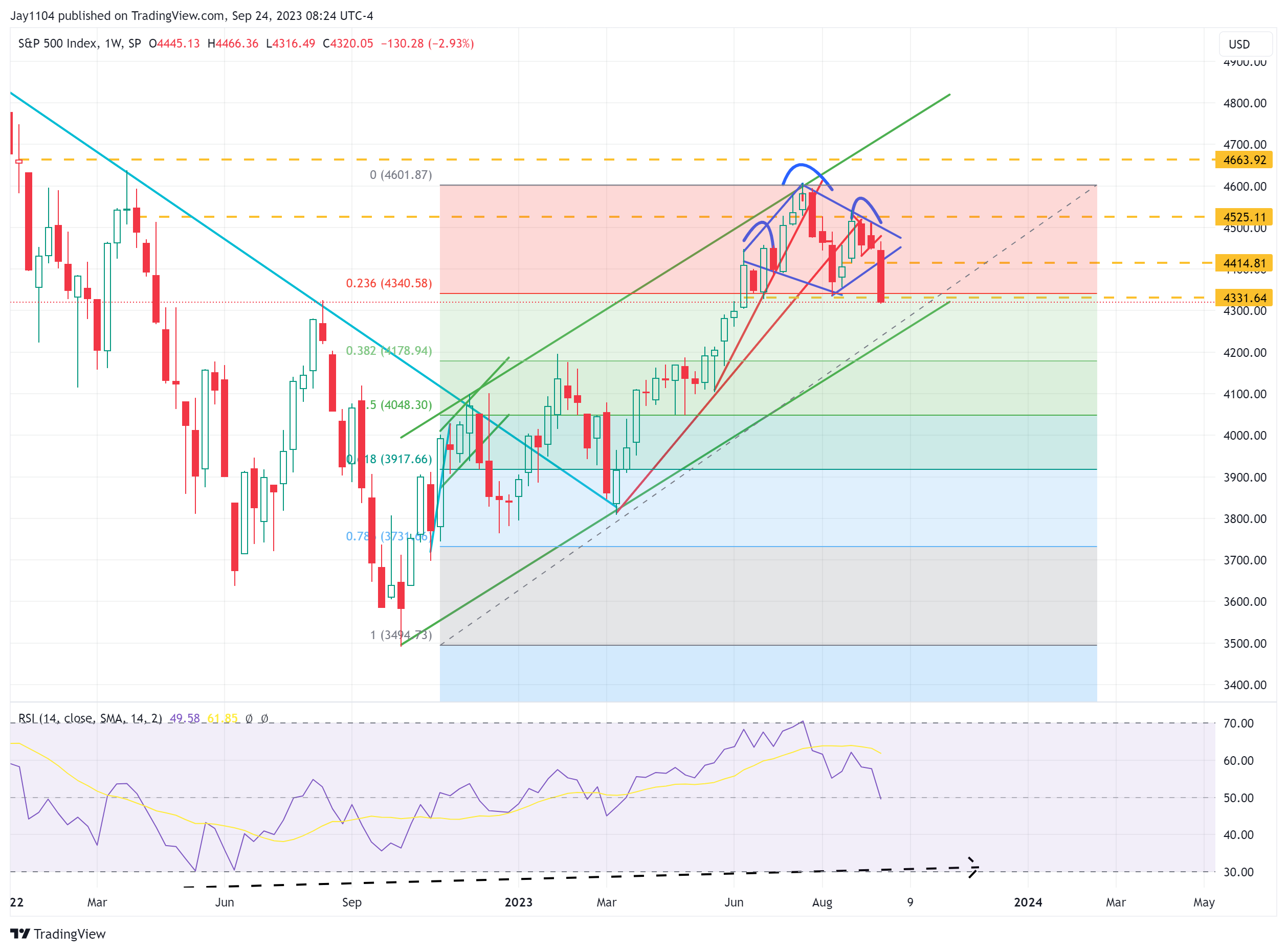
US Dollar Index Poised for a Rally
Not only that, but the dollar is now on the cusp of a major breakout after hitting resistance at 105.6. It seems clear that the dollar could continue strengthening against the yen, especially given the Bank of Japan’s inaction this past week and the rising inflation rates.
Meanwhile, the European Central Bank seems uncertain about its next steps, and the Bank of England should have raised rates last week but chose to back down. The US economy continues to perform better than much of the world, which suggests that the dollar should strengthen against the euro, pound, and yen.
If it weren’t for the People’s Bank of China consistently setting the daily fixing rate for the yuan at an absurdly low level, the dollar would gain against the yuan. However, the yuan’s exchange rate isn’t as free-floating as many believe it to be.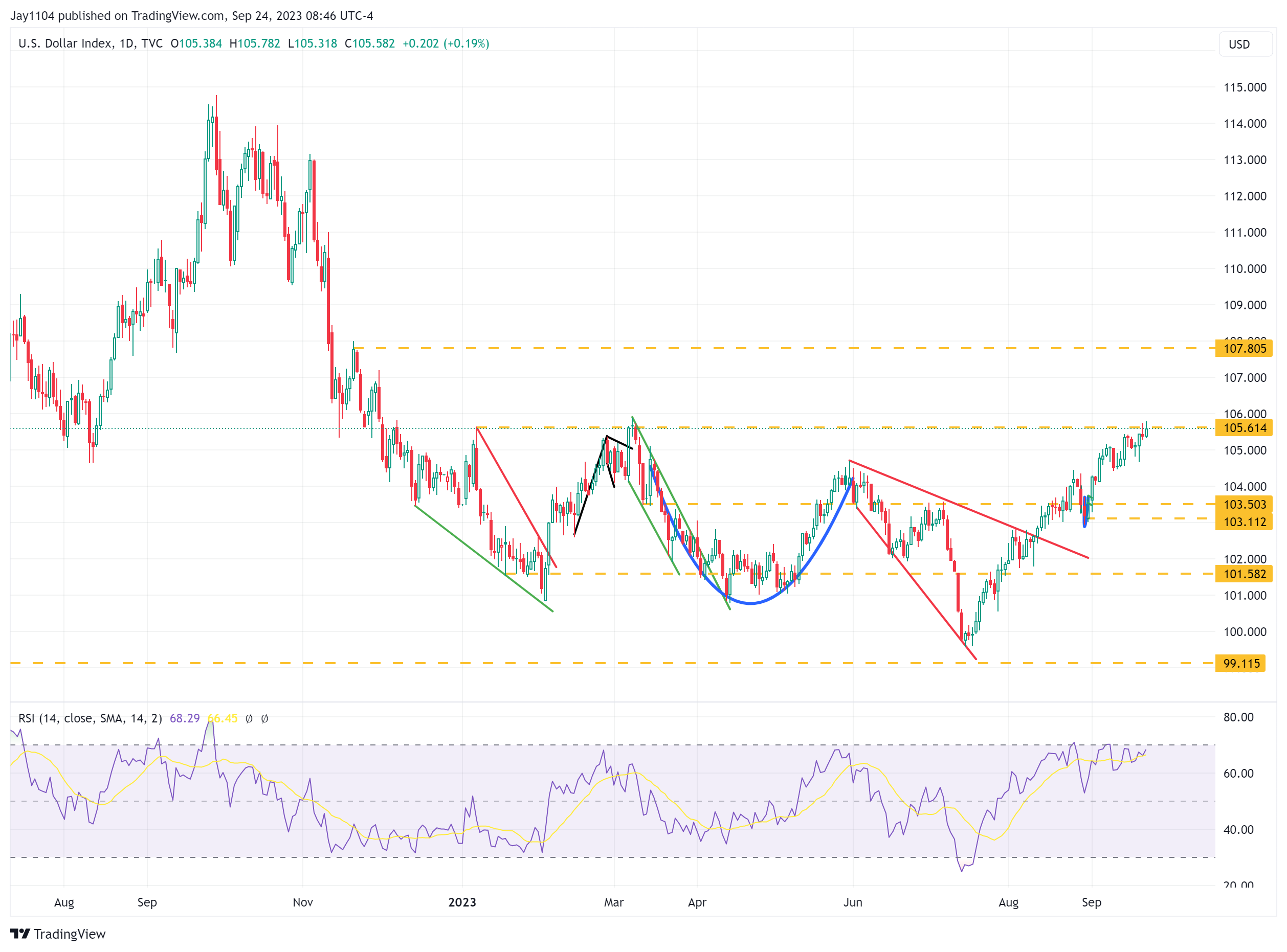
Rates Rise: More Trouble Ahead for Stocks?
But the bigger problem facing stocks at this point is that the rates have moved up dramatically since the middle of May, and when rates took a big turn higher, the earnings yield of the S&P 500 took a big move lower.
This caused the spread between the earnings yield of the S&P 500 and the 10-year rate to contract, and this was a general condition we saw across the market due to the easing of financial conditions, as most investors believed the Fed would be aggressively cutting rates later in 2023. Clearly, the Fed made it clear this past week that the market’s bet was wrong.
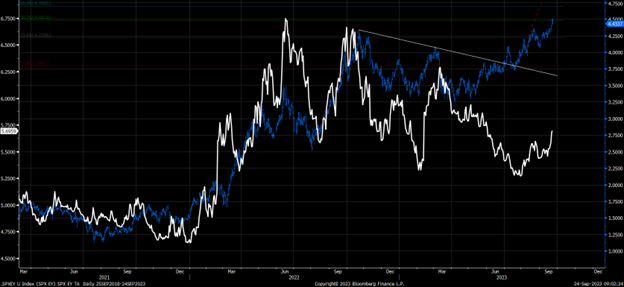
We saw the same thing occur with high yield and investment grade debt, as the spreads contracted, a sign that suggests that investment grade and even high yield deserved to trade a lower premium than that of US Treasuries.
But that seems to be changing with the High Yield spread index now moving sharply higher over the past couple of days and as it continues to move higher, it would suggest that the earnings yield for the S&P 500 should move higher as well.
High Yield Corporate Bond ETF HYG Breaks Lower
This essentially implies that HYG is the most crucial ETF to monitor this upcoming week, especially since HYG has breached the symmetrical triangle formed over recent months. If HYG’s decline accelerates downward, it will likely signal that the S&P 500 is poised to follow suit.
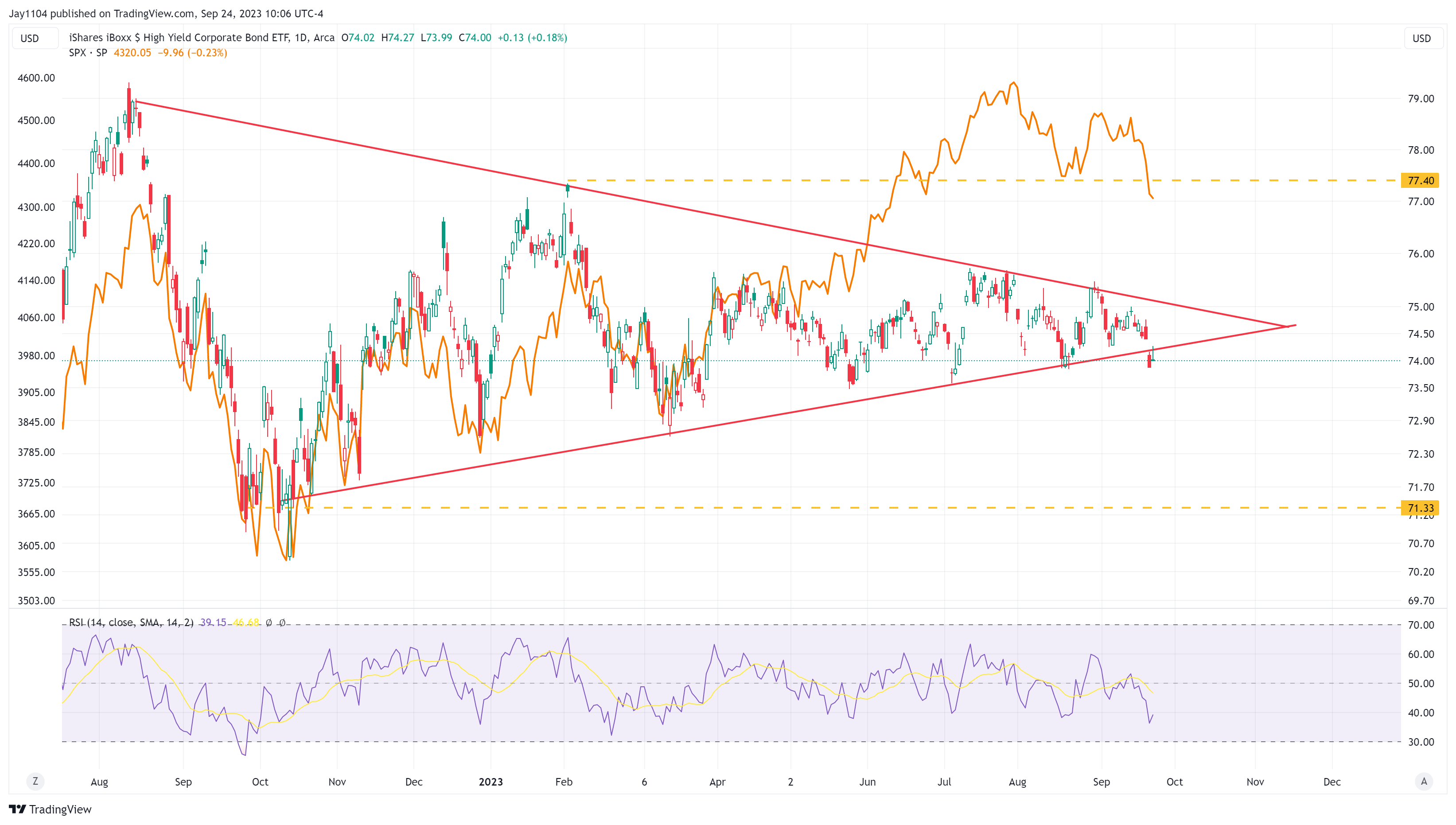
Spreads Could Widen Further
There’s a valid reason to believe that HYG might continue to decline, especially since it hasn’t mirrored the drops in TLT, IEF, or LQD. These represent the 20-Year+ Treasury Bond ETF, the 7-10-Year Treasury ETF, and the Corporate Bond ETF, respectively.

This trend is also evident in the credit default swaps for the major banks. As the value of these swaps increases, it indicates escalating risks in the overall sector, and that is a warning to the rest of the stock market.
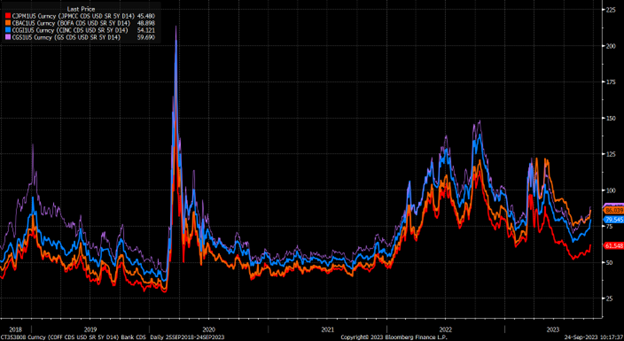
So, even if Treasury rates don’t rise much further or merely consolidate sideways, there’s a risk that spreads continue to widen, as they probably should have narrowed from the start. It seems that the risk-on asset classes were banking on Fed rate cuts and for the monetary policy not to remain as restrictive as projected in the Fed’s September Summary of Economic Projections.
The market made an incorrect assumption. Now, it appears to me that both the equity market and the high-yield junk bond market need to align with where the Treasury market stands. This will likely tighten financial conditions, which is not favorable for stocks.
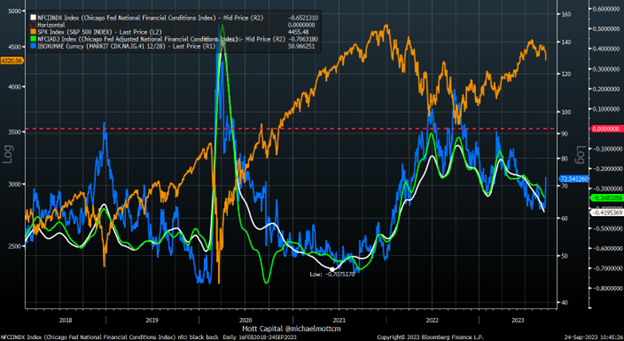
Semiconductors Breaks Below Support
The Philadelphia Semiconductor Index broke its neckline on Thursday, then retested that break on Friday and failed. Unless the 3,390 level is quickly reclaimed on Monday, accompanied by a higher close, the index appears broken with the next support level about 3 to 4% lower.
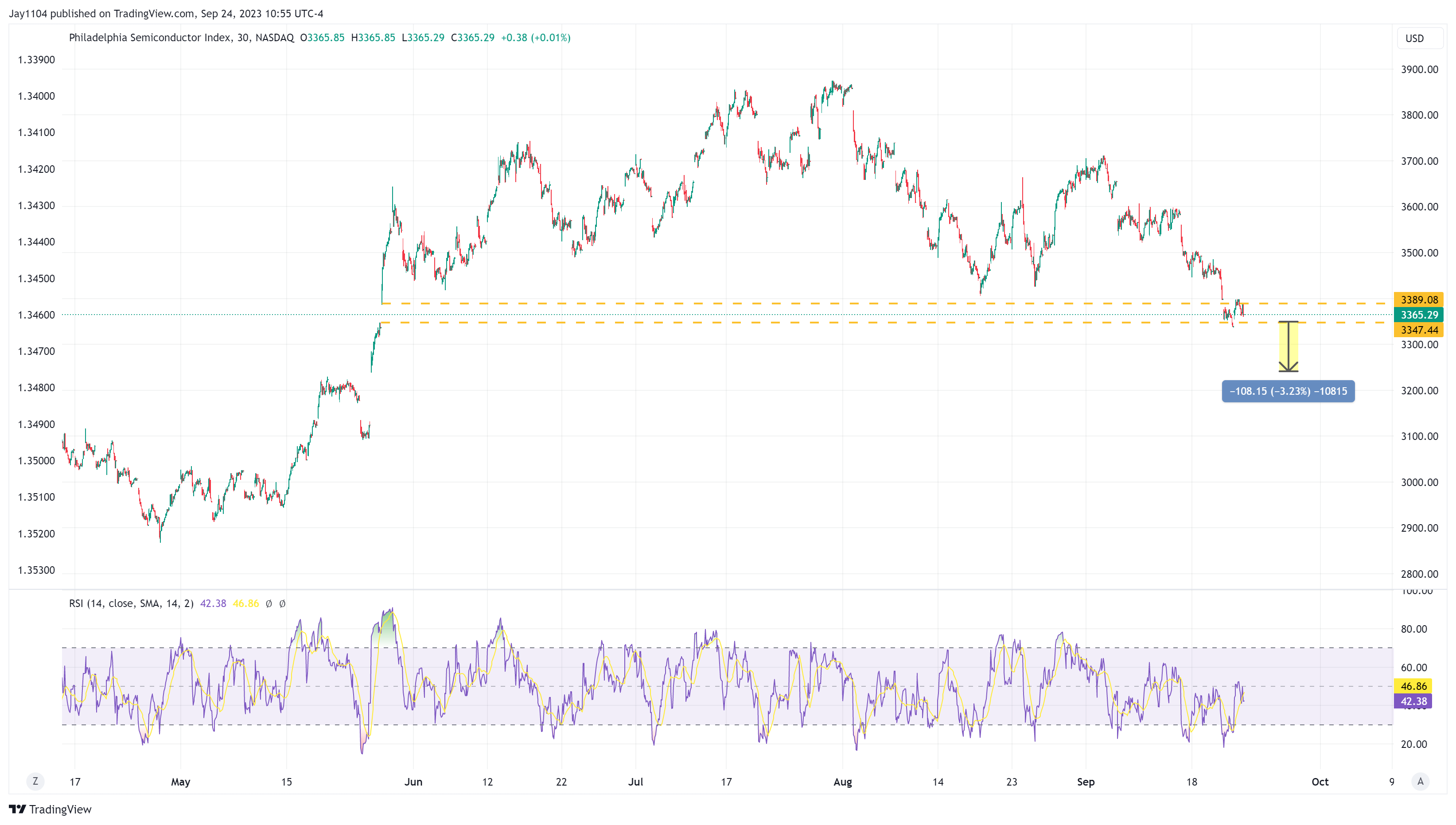
Tech Stocks Could Head Lower as Well
The Technology ETF (XLK) seems to be on technical support after breaking below a diamond pattern. This chart also appears significantly compromised. Unless the XLK manages to hold above the $164 region, a 5 to 6% decline could bring the ETF back to its late May levels. Additionally, the XLK displays a downward-sloping RSI and hasn’t even reached the 30 level yet.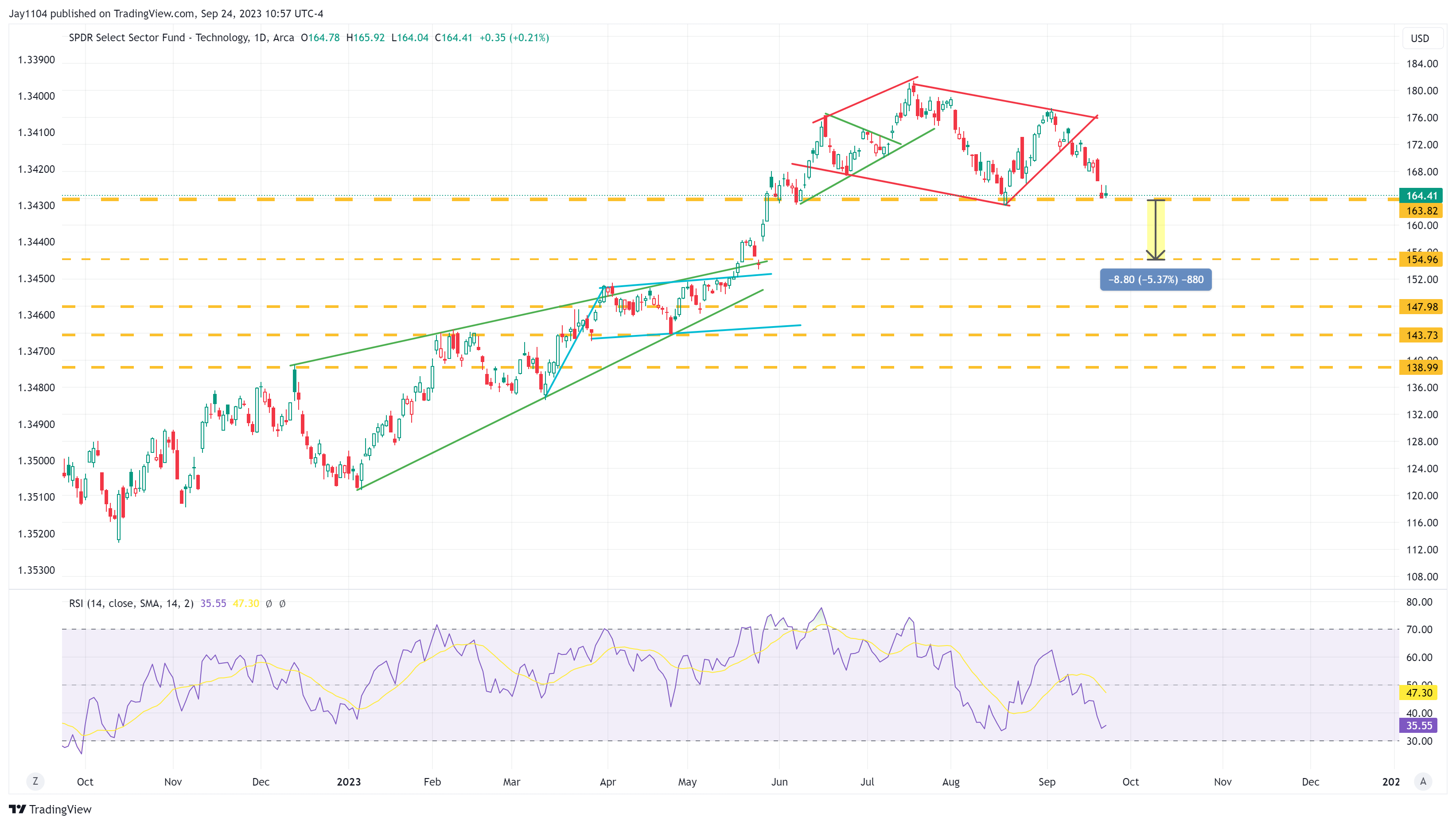
Consumer Discretionary Stocks to Follow Suit?
The situation is similar for the Consumer Discretionary ETF (NYSE:XLY), with XLY sitting at support around $160. There’s a risk of a further 4% drop. What’s more concerning is the long-term technical damage evident on this chart. XLY reached its August 2022 highs, broke above those highs in July 2023, then failed, retested, and failed again. This doesn’t bode well for a sector expected to reach higher levels anytime soon.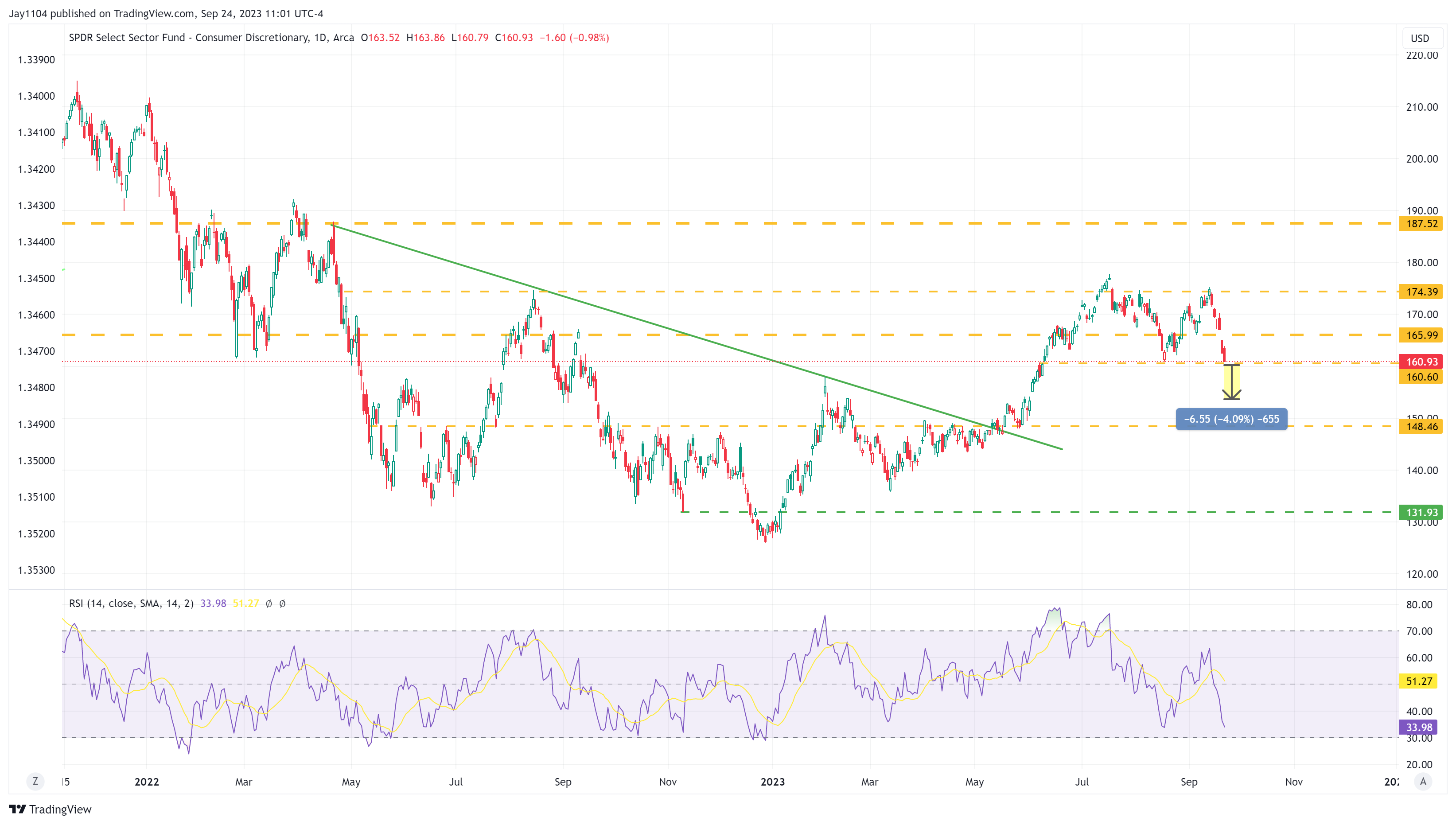
This week’s Free YouTube Video:
